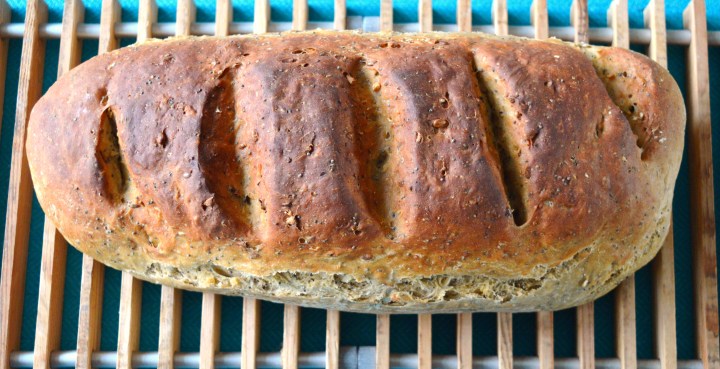I recently saw the 2015 film adaptation of Thomas Hardy’s Far from the Madding Crowd in the Queen’s Film Theatre in Belfast (a quick plug for what might be the world’s most comfortable cinema), and was struck by Hardy’s obsession with the relentless ferocity of the natural world. More accurately, perhaps, I was reminded of being struck by this theme when reading Hardy’s novels. (The film itself being considerably less gritty, rather more idyllic, and much less challenging than Hardy’s original.) Nature’s hostility to mankind is a theme which runs throughout Hardy’s fiction and poetry: cold, exposed, rural scenes, in which storms batter crops or people, are frequent in his novels.
In on such scene in Far from the Madding Crowd, Hardy hammers home the point that the very lives of the novel’s characters depend on the successful safekeeping and sale of the harvest:
‘Apparently there was to be a thunderstorm, and afterwards a cold continuous rain. […] This complication of weathers being uncommon, was all the more to be feared. Oak returned to the stack-yard. All was silent here, and the conical tips of the ricks jutted darkly into the sky.’
It is the evening of the farm-owners’ (the aptly named Bathsheba and her new husband, Sergeant Troy) return from honeymoon, and Troy does not want to be bothered with prophecies of a storm. But Hardy’s audience – being familiar with the vagaries of food production, Malthusian predictions of shortages, and news of famines in Ireland and Scotland – would have seen all the warning signals. The uncovered ricks are extremely vulnerable to the weather and a whole years’ income could be lost in a few hours:
‘[The harvest ricks were worth] Seven hundred and fifty pounds in the divinest form that money can wear – that of necessary food for man and beast: should the risk be run of deteriorating this bulk of corn to less than half its value, because of the instability of a woman?’
Here, Hardy reverses the usual Romantic equation; instead of seeing god in nature, Oak sees something divine in the connection he makes between money and corn. There is little hint of any appreciation of the aesthetic beauty of nature we might expect in a novel set in rural south-west England.
The rise and fall of the availability and the price of cereal products is central to a later novel by Hardy, The Mayor of Casterbridge. Although this might seem like a topic more suited to a financial or agricultural publication, Hardy illustrates how the social, economic, and gastric wellbeing of Casterbridge’s population depends entirely on the growing of corn. The first time the reader encounters this Wessex town, the people complain voraciously about the poor quality of the bread that season:
‘the dough ran all over the ovens like quicksilver; so that the loaves be flat as toads, and like suet pudden inside’.
I think it was the second time that I made bread (and forgot to add the key ingredient of salt) that it was as flat and inedible as a toad. Fortunately, it was only myself and my husband who had to suffer it. In the close-knit community of The Mayor of Casterbridge a failure in one part of the supply chain affects everybody, but particularly the poor. According to one character, the ‘poor volks’ insides [are] plim like blowed bladders this week’. At the tea-tables of the wealthy there is white bread and butter instead (see my recipe based on Christina Rossetti’s ‘Goblin Market’).
Hardy does allow his characters some respite from their battle to eke out existence, and the inhabitants of Casterbridge do eat bread. One of the things I appreciate about reading Hardy is that I can never predict how a novel is going to end. I am always wondering whether he is going to let the lovers find some sort of happiness, or suddenly let his readers walk off an emotional cliff-edge. So I’m going to stop here before I spoil the plots, and leave you instead with a recipe for a delicious farmhouse loaf. Enjoy!
Recipe
Ingredients
250g strong white bread flour
250g wholemeal bread flour
1 tsp yeast
1 tsp sugar
1 tsp salt
1 tbsp. oil
300-350ml warm water (not hot!)
1 tsp poppy seeds
1 tsp sunflower seeds
Directions
Mix the dried ingredients together and then add the oil and water.
Using your hands, bring together into a rough dough.
Turn out onto the work-surface and knead for 10 minutes (or use a dough hook on a food mixer for 5 minutes!).
Return to the bowl and cover with clingfilm or a damp teatowel. Leave in a warm place for about 1 hour, or until doubled in size.
Knock the air out of the dough and knead for 5 minutes, then place in a 900g loaf tin and leave to prove in a warm place. It should be covered and double in size again. This takes about 1 hour.
In the meantime, heat the oven to 180 degrees Celsius.
Bake the break for 30 minutes and serve warm with butter!



